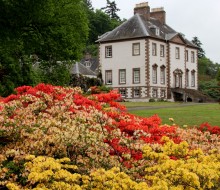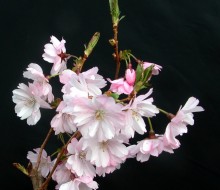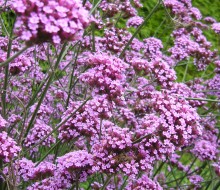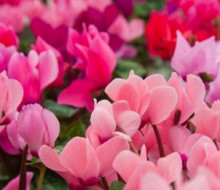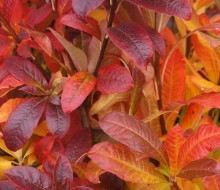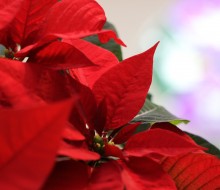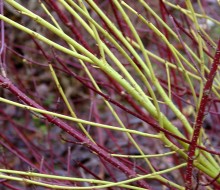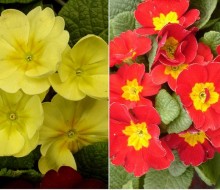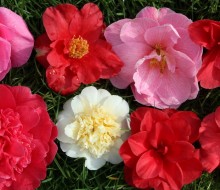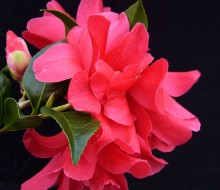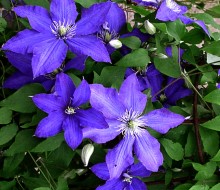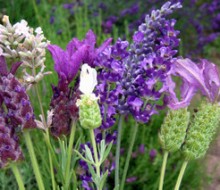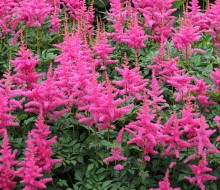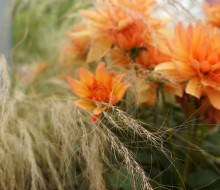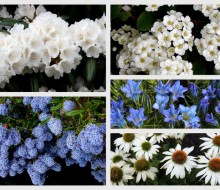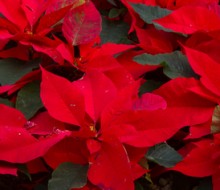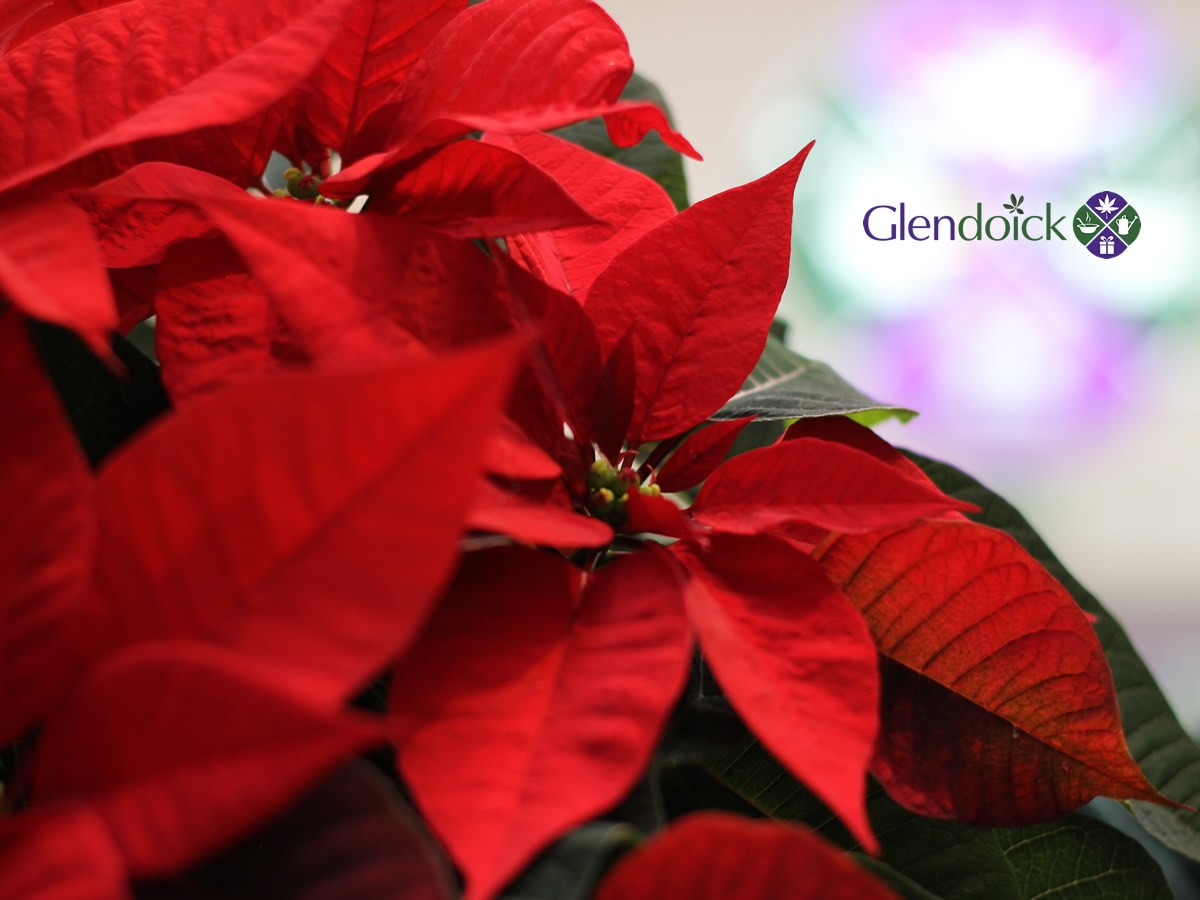

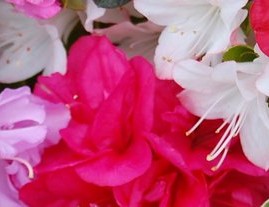
Amazing range of colour: red, pink, purple white and bicolour. Double and Single.
Plants for bright, cool conditions of around 10-15°C (50-59°F)
Azaleas naturally bloom in spring, but they are forced into flower early for Christmas
Grow in a cool location (does not like central heating) and keep moist. So not let the compost dry out. Place the container on a pebble tray or saucer to maintain humidity
A sunny windowsill is an ideal position for azaleas during winter
In mid-April, repot using an ericaceous compost. Plants can be stood outdoors in a cool, shady site for the summer but keep moist. Bring indoors before frosty weather.
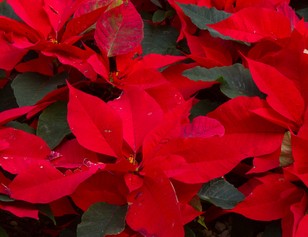
The favourite Christmas Houseplant usually red but they now come in pink white and marbelled too.
Glendoick only sell Scottish grown Poinsettia as they hate travelling. Supermarket poinsettias usually die quickly as they have been trucked from round Europe and then they dont last.
They need bright, but filtered light, away from strong sun and they hate draughts.
Bes with a minimum temperature of 13-15°C (55-59°F) but they can take cool temperatures as long as it is not draughty or fluctuating.
Be careful when transporting poinsettias from the shop to your home in the winter, as the cold outdoor temperatures can damage the foliage. If cold or windy ask for wrap for the plant.
Do not overwater and keep water off the foliage but mist to keep humidity up.
Very hard to get back into flower so usually thrown away after Christmas.
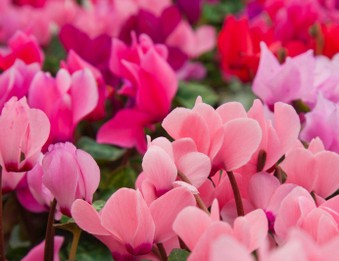
Cyclamen should bloom for several months and can flower again in future years. Select a plant with plenty of buds showing underneath the foliage. Avoid plants with drooping or yellow leaves, as they have often been overwatered.
Choose a cool, brightly-lit situation, away from direct sunlight and heating
Occasional drying out of the compost is less harmful than overwatering.
Best watered from below using a saucer. Keep foliage and flowers dry.
Remove spent flowers by twisting the stems.
After flowering, continue careful watering and feeding until leaves yellow, then reduce watering as the plant becomes dormant for the summer.
As new growth appears, replace the top few centimetres (half an inch) of compost in the container with fresh compost and resume regular watering.
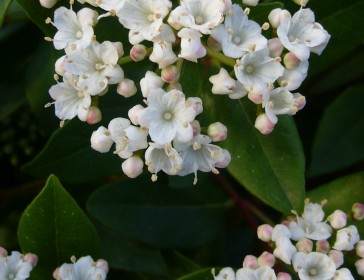
This popular compact evergreen is one of the most widely grown winter flowering shrubs. Hardniess H4-5 (height 1.5-3m) one of the most reliable winter-flowering shrubs, a fine dense, evergreen species with plentiful small white flowers in late autumn to early spring and blue-black berries. Pretty tough, but may be damaged in coldest inland gardens . Flowers best in sun but tolerant of some shade, and good in coastal areas. If grown in a container, protect the roots by wrapping the container in very cold weather.
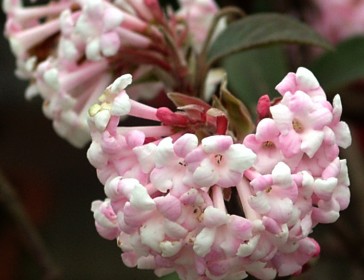
Hardiness H4-5 Height 2-3m. A wonderful winter flowering deciduous shrub which can flower on and off for months all winter. The sweetly-scented, long lasting pink to white flowers open during mild periods from November to February. Any reasonable soil in a sunny or partly shaded site.
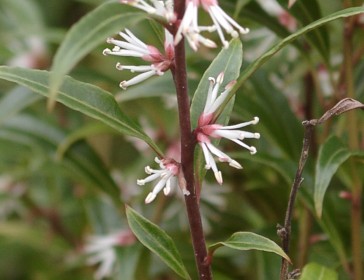
Visitors to Glendoick in winter who visit our greenhouse in the plant area will soon be met with the sweet smell of Christmas Box. This popular evergreen small shrub or ground cover has a mass of small white sweetly scented flowers opening in midwinter, on a spreading. It has occasional black fruit in summer and is useful for its tolerance of dry shade. Plant it near the door of the house and you'll smell it every time you pass.
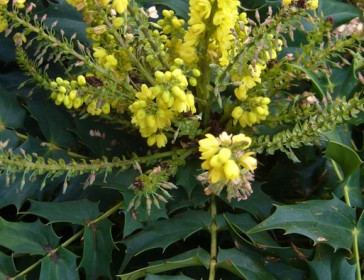
Mahonias are striking statuesque shrubs with evergreen holly-like leaves with sharply toothed leaves. They have yellow, slightly fragrant flowers in upright racemes, November- March. Young leaves flushed reddish.
Useful for its evergreen winter foliage, winter flowers and will grow in quite dry conditions.
Hardiness Tough, H4-5. Size will grow to 3-5 x 3-5m
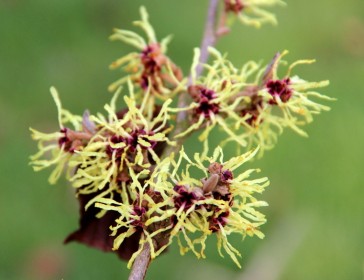
When all else is frozen, one old faithful in winter-early spring is the Hamamelis with its frost-resistant flowers. The curious spidery or string-like ribbons of yellow, orange or red petals are held on bare branches, and most yellow forms are scented. The more or less oval, ribbed leaves often turn to fine oranges and yellows in autumn. Hamamelis need moist well-drained soil in sun or part shade, with some wind shelter. Watch out for suckers from the rootstock and remove these. In mild winters, they can open as early as November, but typically by January to February they are at their peak. (Hardiness H5) Height to 3-5m.
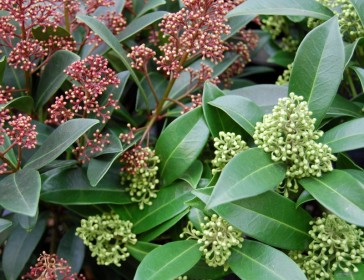
Skimmias are very popular winter interest evergreens, mound-forming, and good in containers. They like moist but well-drained acidic soil, and in the garden, grow best in some shade. The most popular are males with masses of tiny flowers. Both male and female varieties are required for the red or yellow berries, except in the case of the self-fertile S. reevesiana. For good berrying in the garden best to plant a mix of several varities.
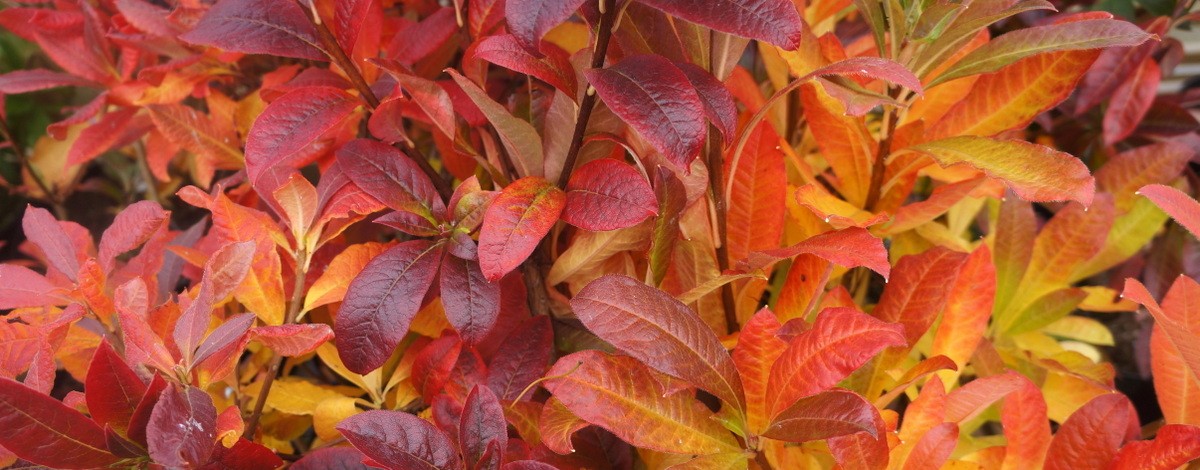
The garden need not be empty of colour and scent at this time of year: Many winter flowering shrubs have small sweetly scented flowers: why not create a small scented winter garden using Viburnum, Hamamelis, Sarcococca and contrast them with the red winter stems of dogwood.
Many plants show off their coloured stems and bark at this time of year.
For maximum impact, plant the shrubs in groups and the trees where their bark can be seen and appreciated: against a contrasting background: pale bark shows up well against a dark background for example and vice versa.
Cornus (dogwood) and Salix (willow) are best pruned each year, almost to ground level in Spring, to ensure good crop of the bright coloured stems for winter. You can also cut Eucalyptus down each year or two for the same effect and to keep the foliage juvenile.
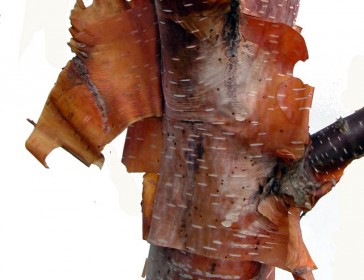
Acer davidii (snakebark maple) green-and-white striped bark. Height 5-8m
Acer griseum (paper bark maple) peeling red-brown bark. Height 5-10m
Eucalyptus paucifolia subsp. niphophila (snow gum) bark whitish gray and pale brown with greenish patches. Height 6m, less if pruned back
Salix alba var. vitellina ‘Britzensis’ rusty orange stems. Ht 2m or more.
Salix ‘Erythroflexuosa’ (S. matsudana ‘Tortuosa’) golden, twisted stems (tolerates drier soil). Ht 2–3m
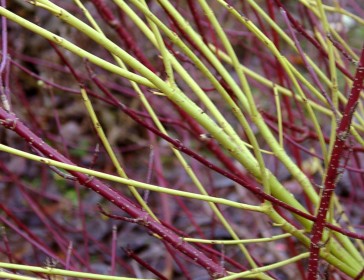
Cornus sanguinea ‘Midwinter Fire’ – a mix of yellow and salmon-orange. Ht 1-1.5m
C. alba 'Kesselringii' – reddish purple stems. Ht: 1.2–1.5m
